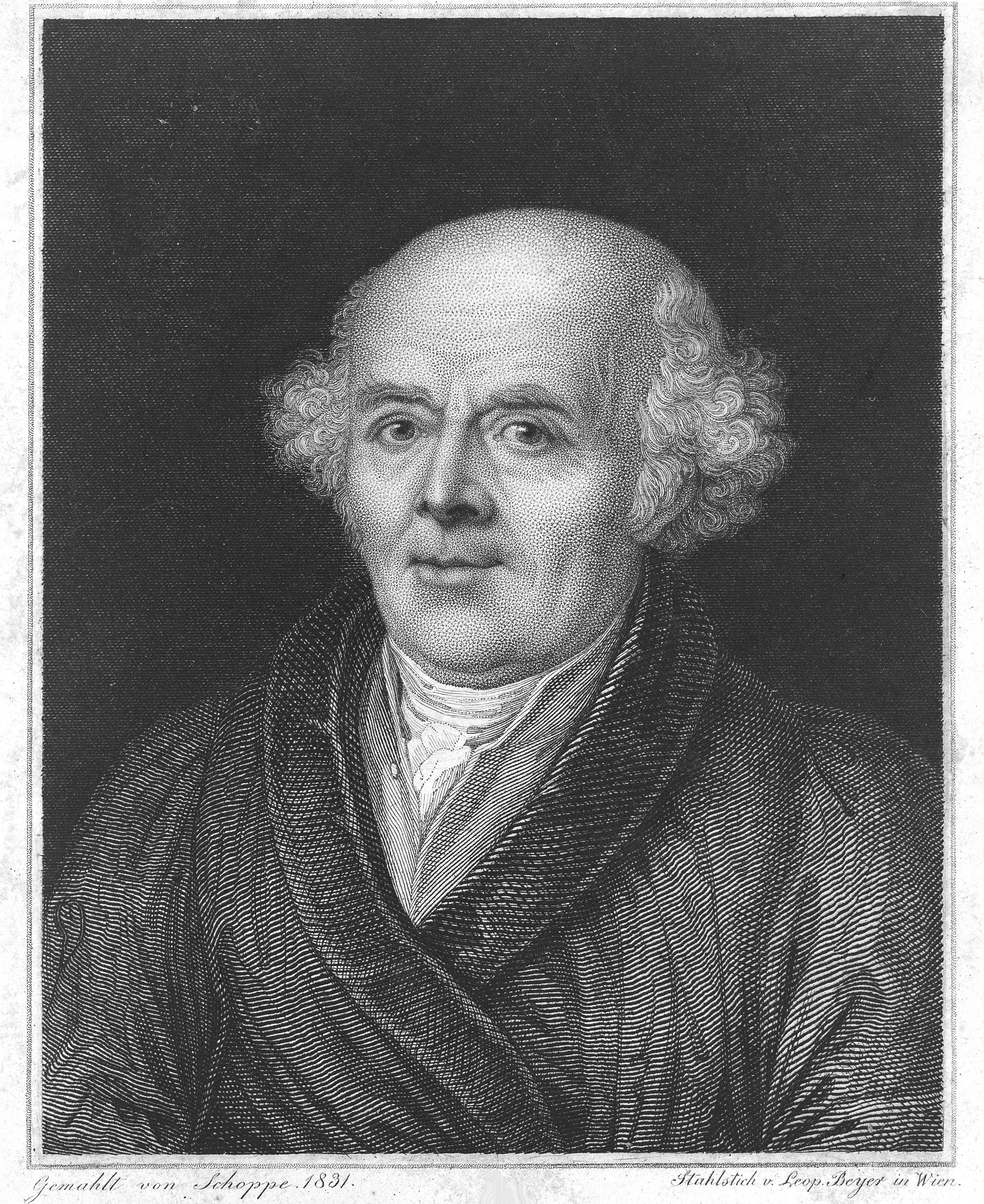Christian Friedrich Samuel Hahnemann was born in Meissen, Saxony, near Dresden. His father Christian Gottfried Hahnemann was a painter and designer of porcelain, for which the town of Meissen is famous.
As a young man, Hahnemann became proficient in a number of languages, including English, French, Italian, Greek and Latin. He eventually made a living as a translator and teacher of languages, gaining further proficiency in "Arabic, Syriac, Chaldaic and Hebrew".
Hahnemann studied medicine for two years at Leipzig. Citing Leipzig's lack of clinical facilities, he moved to Vienna, where he studied for ten months. After one term of further study, he graduated MD at the University of Erlangen on 10 August 1779, qualifying with honors. His poverty may have forced him to choose Erlangen, as the school's fees were lower. Hahnemann's thesis was titled Conspectus adfectuum spasmodicorum aetiologicus et therapeuticus. [A Dissertation on the Causes and Treatment of Spasmodic Diseases]
Medical practice
In 1781, Hahnemann took a village doctor's position in the copper-mining area of Mansfeld, Saxony. He soon married Johanna Henriette Kuchler and would eventually have eleven children. After abandoning medical practice, and while working as a translator of scientific and medical textbooks, Hahnemann travelled around Saxony for many years, staying in many different towns and villages for varying lengths of time, never living far from the River Elbe and settling at different times in Dresden, Torgau, Leipzig and Köthen (Anhalt) before finally moving to Paris in June 1835.
Hahnemann was dissatisfied with the state of medicine in his time, and particularly objected to practices such as bloodletting. He claimed that the medicine he had been taught to practice sometimes did the patient more harm than good:
After giving up his practice around 1784, Hahnemann made his living chiefly as a writer and translator, while resolving also to investigate the causes of medicine's alleged errors. While translating William Cullen's A Treatise on the Materia Medica, Hahnemann encountered the claim that cinchona, the bark of a Peruvian tree, was effective in treating malaria because of its astringency. Hahnemann believed that other astringent substances are not effective against malaria and began to research cinchona's effect on the human body by self-application. Noting that the drug induced malaria-like symptoms in himself, he concluded that it would do so in any healthy individual. This led him to postulate a healing principle: "that which can produce a set of symptoms in a healthy individual, can treat a sick individual who is manifesting a similar set of symptoms." This principle, like cures like, became the basis for an approach to medicine which he gave the name homeopathy. He first used the term homeopathy in his essay Indications of the Homeopathic Employment of Medicines in Ordinary Practice, published in Hufeland's Journal in 1807
Development of homeopathy
Following up the work of the Viennese physician Anton von Störck, Hahnemann tested substances for the effects they produced on a healthy individual, presupposing (as von Störck had claimed) that they may heal the same ills that they caused. His researches led him to agree with von Störck that the toxic effects of ingested substances are often broadly parallel to certain disease states, and his exploration of historical cases of poisoning in the medical literature further implied a more generalised medicinal "law of similars". He later devised methods of diluting the drugs he was testing in order to mitigate their toxic effects. He claimed that these dilutions, when prepared according to his technique of "potentization" using dilution and succussion (vigorous shaking), were still effective in alleviating the same symptoms in the sick. His more systematic experiments with dose reduction really commenced around 1800–01 when, on the basis of his "law of similars," he had begun using Ipecacuanha for the treatment of coughs and Belladonna for scarlet fever.
He first published an article about the homeopathic approach in a German-language medical journal in 1796. Following a series of further essays, he published in 1810 "Organon of the Rational Art of Healing", followed over the years by four further editions entitled The Organon of the Healing Art, the first systematic treatise and containing all his detailed instructions on the subject. A 6th Organon edition, unpublished during his lifetime, and dating from February 1842, was only published many years after his death. It consisted of a 5th Organon containing extensive handwritten annotations. The Organon is widely regarded as a remodelled form of an essay he published in 1806 called "The Medicine of Experience", which had been published in Hufeland's Journal. Of the Organon, Robert Ellis Dudgeon states it "was an amplification and extension of his "Medicine of Experience", worked up with greater care, and put into a more methodical and aphoristic form, after the model of the Hippocratic writings."
Coffee theory of disease
Bust of Samuel Hahnemann by French sculptor David d'Angers (1837).
Around the start of the nineteenth century Hahnemann developed a theory, propounded in his 1803 essay On the Effects of Coffee from Original Observations, that many diseases are caused by coffee. Hahnemann later abandoned the coffee theory in favour of the theory that disease is caused by Psora, but it has been noted that the list of conditions Hahnemann attributed to coffee was similar to his list of conditions caused by Psora.

Comments
Post a Comment